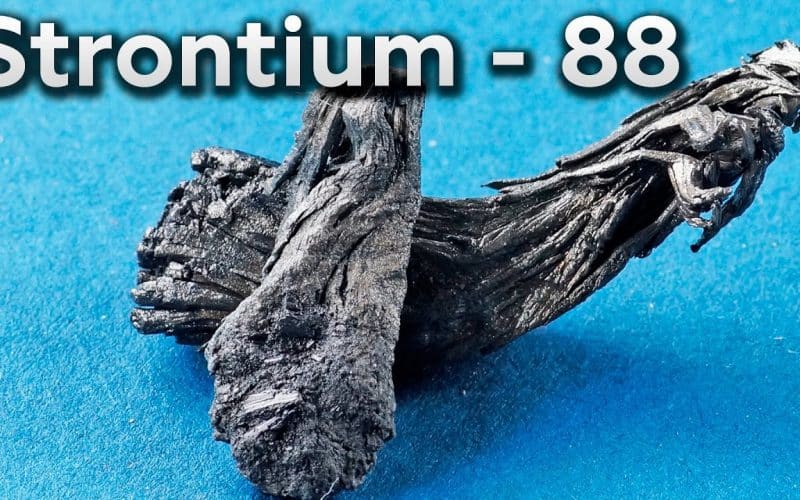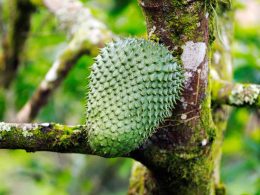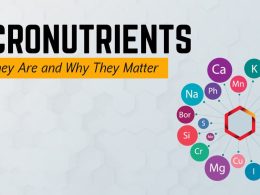Strontium is an alkaline mineral naturally found in soil and seawater. It is available as a supplement and used in treating some medical conditions, especially those related to the bones like osteoporosis.
This mineral or supplement is not well known and it is also a highly controversial supplement. Despite the controversy, it is a well-known fact that strontium has bone-boosting abilities just like calcium.
The radioactive form of strontium is used in treating cancers of the bones and prostate. This post will help you know more about this mineral and ways it affects your health.
Important information About Strontium
Strontium is named after a village in Scotland called Strontian, it was first discovered in this village in the ores of lead mines in 1787. It was isolated in 1808 using electrolysis to get its metallic form.
Strontium became popular in the 19th century when it was first used in large scale to extract sugar from sugar beets. It was also used by the television production industry to produce cathode ray tubes of color TVs.
This alkaline earth metal is similar to calcium and barium. It is regarded as a soft metal and it has various compounds. Strontium occurring in nature has a silvery white metallic color and a tint of yellow. It is the 15th most abundant element on earth and easily found in nature. The quantity of strontium in the earth crust is estimated to be 360 PPM.
Apart from seawater and soil, strontium can also be found in foods. The highest source of strontium in nature is in seafood, although little quantities can be found in spinach, root vegetables (potatoes and carrots), whole milk, beans, celery, lettuce, and beans.
99% of strontium in the human body is found in the bones. Strontium monochloride (gaseous form) is used in making red fireworks. It is responsible for the brilliant color displayed.
It is also what is used in making the red color in emergency flares.
Health Benefits of Strontium
Some of the health benefits of strontium are controversial. However, the ones I will be sharing here are evidence-based.
It’s important to note that more studies are being done on strontium and one day, we will get a clearer understanding on the importance of this mineral in the body and the uses and safety of this supplement.
Boosts the absorption of calcium
Calcium is needed for healthy bones and one of the functions of strontium is to boost the absorbability of calcium. This ensures that your body gets calcium from your food and it gets to the bones and does its work.
Strontium activates calcium-sensing receptors on your cells. These receptors detect the presence of calcium and absorb it. In your kidneys also, the calcium-sensing receptors increase your reabsorption of calcium in your urine when you are low on calcium.
Calcium-sensing receptors are also present on your osteoblast. These are cells that make new bones. Strontium help to activate osteoblasts but not as much as calcium does.
The version of calcium-sensing receptors in osteoblast can only be activated by strontium.
Improves bone health
Many people interested in natural healing opt for strontium supplements when handling bone disorders. Research has shown that it is helpful in cases of osteoporosis and other bone problems.
However, the main issue on ground is that it has not yet been considered as a nutrient. This is one of the reasons why there are a lot of controversies around strontium.
Despite this, strontium is highly absorbable by the human body just as calcium. The most common form of strontium sold as a prescription medication is strontium ranelate.
It is used in Australia and Europe to treat bone fractures and osteoporosis. But some health experts warn against the use of this because a study revealed that it increases the risks of heart disease.
Due to this, strontium renelate is only given when prescribed and it is only prescribed in serious cases of osteoporosis (with high risk of fractures). And it is stopped when circulatory or heart problems arise during treatment.
This supplement is not recommended in treating blood obstruction, heart attack, stroke, heart, and circulatory problems.
Promotes bone formation
Strontium increases the rate at which osteoblasts are formed. It also increases their survival and turn on genes that promotes the replication and differentiation of osteoblast cells.
These are processes in which osteoblasts are formed and developing them to a working state. It increases the lifespan of your bone-building cells.
This simply means that strontium promotes the production of more osteoblasts, it helps them grow faster, and keeps them alive for a long time. It also increases the production rate of osteoid.
Osteoid is the un-mineralized portion of the bone. It is formed before minerals are laid down to produce fully developed bones. This is the process where osteoid go from basic minerals to full-blown bones.
Treats bone cancer
Strontium is used in treating bone cancer by using the radioactive form, strontium-89. It is only used in advanced stages of bone cancers and cancers that have spread to the bones like metastatic prostate cancer. It is also given intravenously.
The radioactive form of strontium is branded Metastron and it is used if there are cancer cells in more than one area of the bone. Radioactive strontium reduces the pain and treats the cancer cells.
Regulates the breakdown of bones
There are 2 key molecules that control the rate of bone resorption, they are OPG (Osteoprotegerin) and RANKL (receptor activator of nuclear factor kB ligand). Strontium regulates the activities of these compounds.
RANKL activates osteoclasts and increase bone resorption while OPG is a decoy for RANKL and it reduces bone resorption. Strontium inhibits RANKL and increase OPG.
This is important for postmenopausal women. The transition affects hormonal balance, it makes the levels of estrogen to drop and this can increase the production of RANKL and reduce that of OPG.
This can affect your bone health because an increase in the production of RANKL destroys the bones. Another way strontium regulates the breakdown of bones is to inhibit the production and activities of osteoclast.
It stops the ability of osteoclasts to mature, it reduces the ability of osteoclast to stick to bones and start the removal process. Strontium increases the rate of apoptosis in osteoclast. Apoptosis is a suicide program cells initiate when they become dysfunctional. Strontium slows down the turnover of bones.
There is an increase in bone turnover during menopause and strontium reduces this.
Treats prostate cancer
Cancer of the prostate can spread to the bones most times. This leads to bone metises, an extremely painful condition. Strontium-89 helps in managing pains due to cancer.
Strengthens the bones
Strontium strengthens your bones by improving your resistance to fractures. It helps bones develop in a healthy way and this, in turn, will improve the mechanical resistance of the bones to fractures.
Strontium is deposited in the spongy part of newly developing bones. This is found inside the newly developing bones and it is known as trabecular bones.
This trabecular makes the overall bones flexible and its structure is like honeycomb. The more flexible your bone is, the lower your risks of fractures.
Strontium also improves the mineralization and the formation of healthy bone crystals. These are more stable and resistant to compression damage.
Strontium also increases the number of bone-forming sites like the osteoid surfaces and osteoblasts. It reduces your risks of fractures by up to 59%.
Relieves sensitive teeth
Most toothpastes used in treating sensitive teeth are made with strontium. Strontium chloride hexahydrate is added to toothpaste to relieve tooth pain and sensitive teeth.
Restores the alkaline state of your bones
Strontium citrate provides a bone-friendly environment, the citrate produce an alkaline pH in the body thereby relieving and preventing low-grade metabolic acidosis which has a detrimental impact on your bones.
Acidosis can be caused by high protein diet (especially from animal sources), high intake of refined carbs, and nutritional deficiencies and all these lead to bone loss.
An alkaline pH not only improves your bone health, it also improves the health of your skin, nails, and hair. It promotes a good digestive system and this will help in the proper absorption of nutrients thereby preventing or treating nutritional deficiencies.
Prevents and treats tooth decay
Apart from painful tooth, strontium prevents tooth decay and even cavities. Regular brushing using strontium-based toothpaste increases the concentration of strontium in the enamel and prevents cariogenesis.
Cariogenesis is the formation of cavities. It is even established that people with strontium in their water have low risk of developing cavities.
Natural sources of strontium
Strontium is present in insignificant amount in plants. The higher the content of strontium in the soil on which the plant was grown, the higher the content of strontium in the plant.
Strontium is also present in natural bodies of water like oceans and rivers. It is also present in rocks and soils. It enters what you eat and drink from these sources. The safest way to get strontium is to drink clean stream water and eat edible plants grown in strontium-rich soil.
Seafood, grains, and cereals are the richest plant sources of strontium. Although it content of strontium in these plant foods are trace. The quantity of strontium in fruits and vegetables depend on the soil they were grown on.
Coastal regions have strontium-rich soils. Produce from there are rich in strontium. Commercially produced plant foods grown using herbicides, pesticides, and synthetic fertilizers have lower levels of strontium when compared to their organic counterparts.
Plants are richer in strontium than animal products, except bones. Animal bones are richer in strontium than plant foods, this means a well prepared bone broth can increase the levels of strontium in your body.
Good plant sources of strontium are: spinach, beans, peas, lettuce, bran of grains, and the peel of root vegetables. Brazil nuts are also dense in strontium.
One reason the food sources of strontium is not well known is because this element itself is not famous and it has not even been classified as a nutrient.
But this does not mean it doesn’t exist, it does. Strontium is found in calcium-rich foods. This simply means that anywhere there is calcium, there is strontium.
Animal source of natural strontium are shellfish, especially the filter feeding ones like scallops and oysters. Dairy (milk) and dairy products like cheese also contain natural strontium.
Opt for whole milk if you want to have a good dose of strontium, low fat products also have more strontium than full fat products. Cream has half the amount of strontium in whole milk.
The 2 best dairy sources of strontium are cheddar cheese and skim milk. Strontium is often overlooked while calcium, its sister mineral is well studied and popular.
Studies have shown that if you don’t have enough strontium in your diet, all the calcium in the world won’t help you. You need strontium also to increase your bone density. Strontium is needed if you want to increase your bone density.
These are some of the natural ways you can get strontium, however, in cases of diseases, strontium supplements can be used under the prescription and supervision of a doctor.
There are many forms of supplements available, we have strontium chloride, strontium ranelate, strontium citrate, and even the radioactive strontium.
How Safe is Strontium Supplement?
Strontium supplements can be found in pharmacies, health shops, and even online. There are many formulas for bone health and disorders which are made using a form of strontium.
Strontium citrate is the most common while strontium ranelate is only available in Australia and Europe. The radioactive form of strontium is not available as a supplement.
It is only gotten with prescription and administered intravenously by a health care professional. It is advisable not to use strontium supplements without first consulting your doctor or health care provider.
Much more studies haven’t been done on strontium ranelate supplements and you can’t use them when you have certain health conditions. It can be dangerous if you use strontium supplements when having any of the medical condition mentioned above.
Strontium naturally is safe when present in plant foods and as ingredient in toothpastes. However, the radioactive form (Sr-89) is not safe for pregnant women and women who are breast feeding.
Also, no form of strontium supplements have been regarded safe for both pregnant and breastfeeding women. So, it is better not to use strontium supplements if you are in this class.
The studies/findings on strontium supplements are mixed. This is why it is important to check with a doctor before using this supplement to treat any health problem.
Most especially, people who have stroke, heart disease, circulatory disorders, Paget’s disease (a disease of the bone), blood clotting disorders, and kidney problems should avoid strontium supplements.
In fact, strontium ranelate has been linked to increased risk of blood clot in the intestine. This is why people with blood clotting disorder don’t take this. There are also side effects of taking strontium supplements.
People with advanced kidney disease should avoid strontium ranelate by all means. Some of the adverse side effects of strontium ranelate are headache, diarrhea, and stomach pain.
Also, taking high doses of strontium ranelate is not considered safe. It can damage the bones, so you have to be careful. The side effects of the radioactive form of strontium in treating bone cancer are:
- A slight feeling of more pains in the areas of cancers in your bones. This lasts for a few days
- Anemia can occur after a few weeks of using strontium supplements. You have to have regular blood test after the treatment and also eat healthy, especially foods rich in iron and antioxidants.
Please note that these side effects occur when you use the unnatural forms of strontium like strontium ranelate. It is rare to experience these adverse reactions when you use natural strontium like strontium citrate.
If you want to reap the health benefits of strontium, especially the bone-building benefits while avoiding these side effects, go for strontium citrate. It is made up of 31% elemental strontium and 69% citrate.
Strontium ranelate is made up of 27.8% strontium and 72.2 ranelic acid.
References;
- Strontium WebMD, RX List, NCBI,
- Strontium and bone health World Health, WebMD, NCBI, NCBI, NCBI, NCBI, NCBI, NCBI, NCBI,
- Side effects of strontium ranelate ABH, BW, NCBI, Drugs.com, ATSDR, Google books,
- Strontium and cancer Cancer Research UK, BJUI, European Urology,
- Strontium and dental health NCBI, Springer,
- Health benefits of strontium NCBI, NCBI, NCBI,
- Natural sources of strontium DCN, NCBI









